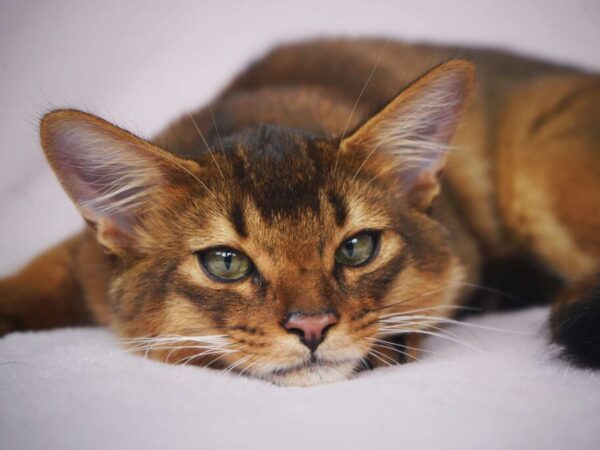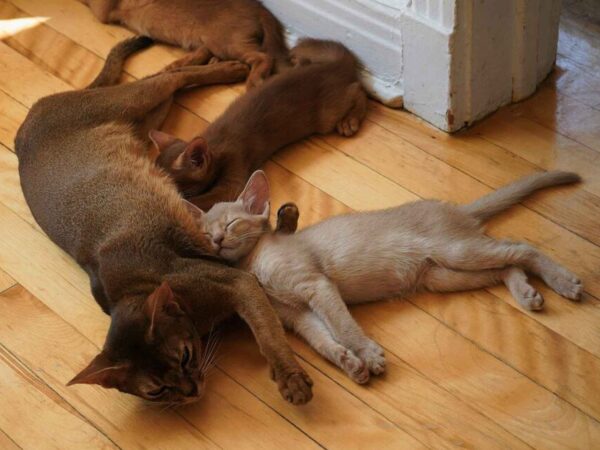Abyssinians and Somalis

QGC Foxholm Evan of Winter Garden – ruddy somali
RW SCG Winter Garden Ceres and her babies – ruddy, sorrel and fawn abyssinians

What is it Like to live with them
Abyssinians and Somalis are generally highly active, agile, affectionate (velcro), friendly, curious, intelligent, and “dog like” cats. Their outgoing nature makes them human oriented, they usually enjoy other animal company and some can be pretty talkative. These cats can lie in bed cuddling with you, watch you play video games, learn tricks, and even go out on adventures on a harness, always happy to participate in anything and everything. However, their intelligence, curiousity and energy level can turn them into troublemakers if their mental or physical needs are not met. Even though Somalis are semi long-haired they very rarely get mats and are as easy to groom as Abyssinians. Both breeds are generally healthy and hardy.
Health
Renal Amyloidosis: This is a kidney disease that causes amyloid protein to clump together and build up inside tissues and organs. It may lead to organ damage and health problems. Abyssinian and Somali cats are prone to this disease, and unfortunately there are no health test available to detect it. However, any cat showing signs or producing affected kittens is removed from the breeding program. I was lucky enough to have not encountered any cases so far.
Pyruvate Kinase Deficiency (PK Def): Pyruvate kinase is an important enzyme needed by the red blood cells. Cats lacking this enzyme develop anemia, fatigue, weight loss, and jaundice. This illness can potentially lead to death. Fortunately, health testing is available and my cattery is free from this disease.
Polycystic Kidney Disease (PKD): It’s the most common inherited cause of kidney failure in all cats. Cysts start to grow and progressively enlarge the kidney, reducing the organ’s ability to function properly. Fortunately, health testing is available and my cattery is free from this disease.
Progressive retinal atrophy (PRA): This refers to a group of genetic conditions that causes the cells in cat’s retina (the innermost light-sensitive tissue in the eye) to deteriorate over time and it can eventually lead to blindness. Fortunately, health testing is available and my cattery is free from this disease.